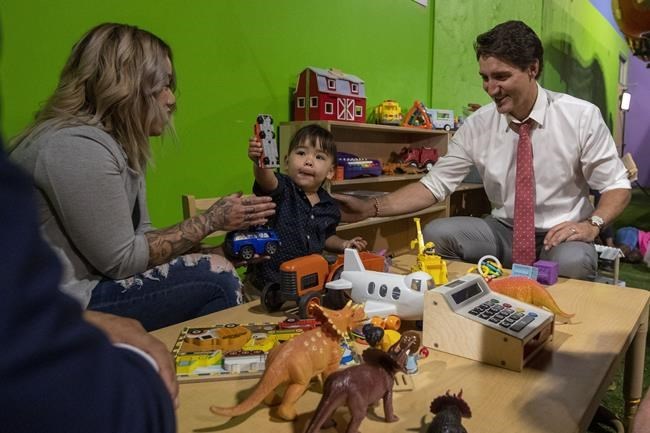OTTAWA — Families eligible for the Canada Child Benefit are getting their July payments Thursday, and they include a hefty cost-of-living adjustment.
Most federal benefits and credits increased by 6.3 per cent this month to reflect the pace of inflation in the previous year.
That means families can receive an annual total of up to $7,437 per child under the age of six and $6,275 per child ages six through 17.
The Liberals are highlighting the Canada Child Benefit to mark its seven-year anniversary after they introduced it in their first budget.
Prime Minister Justin Trudeau was in southeastern Ontario on Thursdayspeaking to families about the impact of the benefit, which he said has reduced poverty across the country.
"Seven years ago we brought in the Canada child benefit," Trudeau told reporters while visiting a Boys and Girls Club location in Kingston, Ont.
"It has impacted families from coast to coast to coast with hundreds of dollars, tax free, every single month to help with the high costs of raising kids."
In 2021, 7.4 per cent of Canadians lived in poverty, down from 12.9 per cent in 2016 when the benefit came into place.
Robert Asselin, who served as the policy and budget director for former finance minister Bill Morneau, hailed the success of the benefit and called it the "signature policy" of the Liberals' 2015 election campaign.
The Canada Child Benefit replaced the Universal Child Care Benefit, which was in place under former prime minister Stephen Harper's government.
A key difference between the two payments is that the Harper-era version was a taxable benefit that all families were eligible for, regardless of their income.
Asselin, who is now the senior vice-president of policy at the Business Council of Canada, said the decision to make the updated benefit means-tested meant that it was better targeted to families who need it most.
"The decision was made to cut off the benefits for people who earn over a certain threshold," Asselin said.
"And, you know, I think credit (goes) to the prime minister, who went with it. And I think that as a result it had a much bigger impact because it was focused on people who needed it."
According to the Canada Revenue Agency, the benefit gradually decreases when the adjusted family net income is over $34,863.
This report by The Canadian Press was first published July 20, 2023.
Nojoud Al Mallees, The Canadian Press
